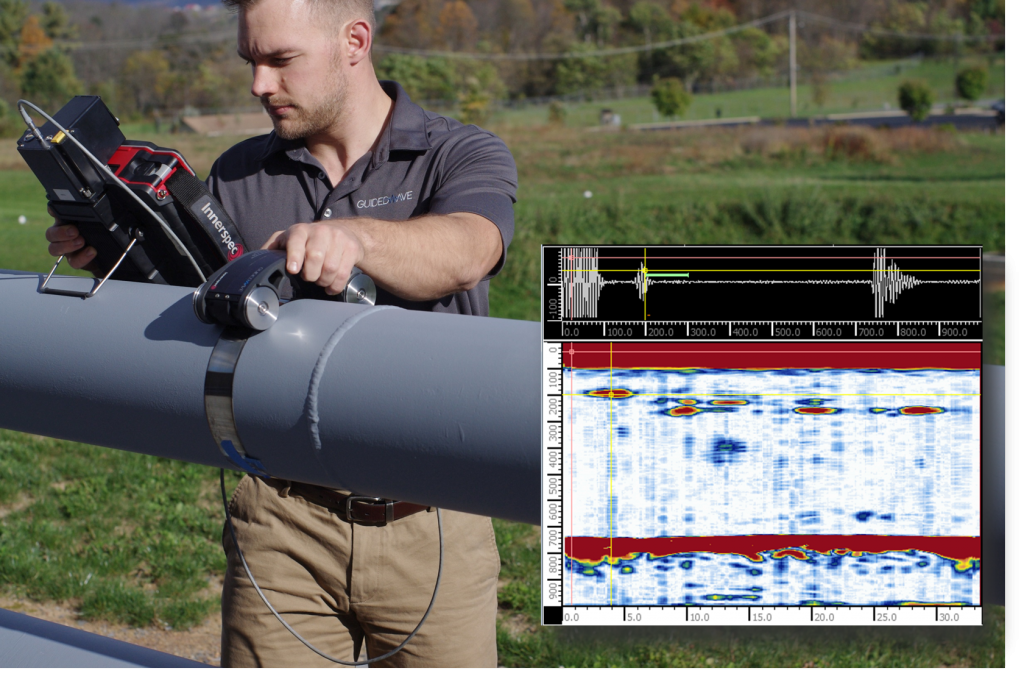This training course provides guided wave inspectors with knowledge and hands-on experience with basic guided wave theory, operation of the MRUT scanner hardware and software, data collection procedures, and basic data analysis for basic scan configurations. The course comprises lectures, in-class data review, hands-on data collection, and independent data review. The course is approximately 1/3 in-class and 2/3 hands-on and data review. The course concludes with a written examination and practical examination.
Objectives
Successful graduates of this course should:
- have a basic understanding of guided waves in plates and the fundamentals of how the MRUT guided wave scanner system works
- be able to setup and connect the MRUT probe and PowerBox H hardware, carry out a system calibration and data quality check, and disassemble the system
- be able to navigate the PowerBox H MRUT software to set up jobs, collect data, and analyze data
- be able to carry out preliminary analyses of MRUT guided wave B-scan data on basic configurations, including straight sections of pipe sections, plates, and shells with minor curvature in the direction of wave propagation
- collect and interpret B-scans and A-scans, including SAFT-processed data
- understand the basic capabilities and limitations of the technology
Course Topics
- Fundamentals
- Introduction to guided waves for NDT
- Common applications for MRUT
- MRUT in the framework of a pipeline integrity management program
- The MRUT system
- Operation and assembly of the MRUT scanner probe
- Navigation and operation of the software
- Manufacturer-recommended inspection procedure
- Guided Wave Inspection Theory and Concepts
- Fundamentals of waves
- Bulk wave ultrasound and ultrasonic testing (UT)
- Basic guided wave theory
- Theory of guided waves in plates and shells
- B-scanning and SAFT processing
- Example MRUT applications
- Preliminary Guided Wave Data Analysis
- Creating sketches and recording pipe/plate information
- Recognizing data quality
- Interpreting the frequency sweep calibration data
- Generating and interpreting B-scans scans
- Utilizing SAFT processing for B-scans
- Identifying known reflectors such as welds, supports, and targets
- Identifying phantom indications
Scope
This course is intended to provide students with a basic understanding of medium-range guided wave applications in pipes and plates, to provide them with the knowledge and tools to follow an inspection procedure to collect high-quality medium-range guided wave data on basic pipe and plate configurations, to perform a preliminary analysis of data from these structures, and to provide them with a knowledge of the functionality and operation of the MRUT probe, the PowerBox H hardware, and the MRUT software. Basic pipes are considered to be generally straight sections of pipe or plates and shells with minor curvature in the direction of wave propagation.
